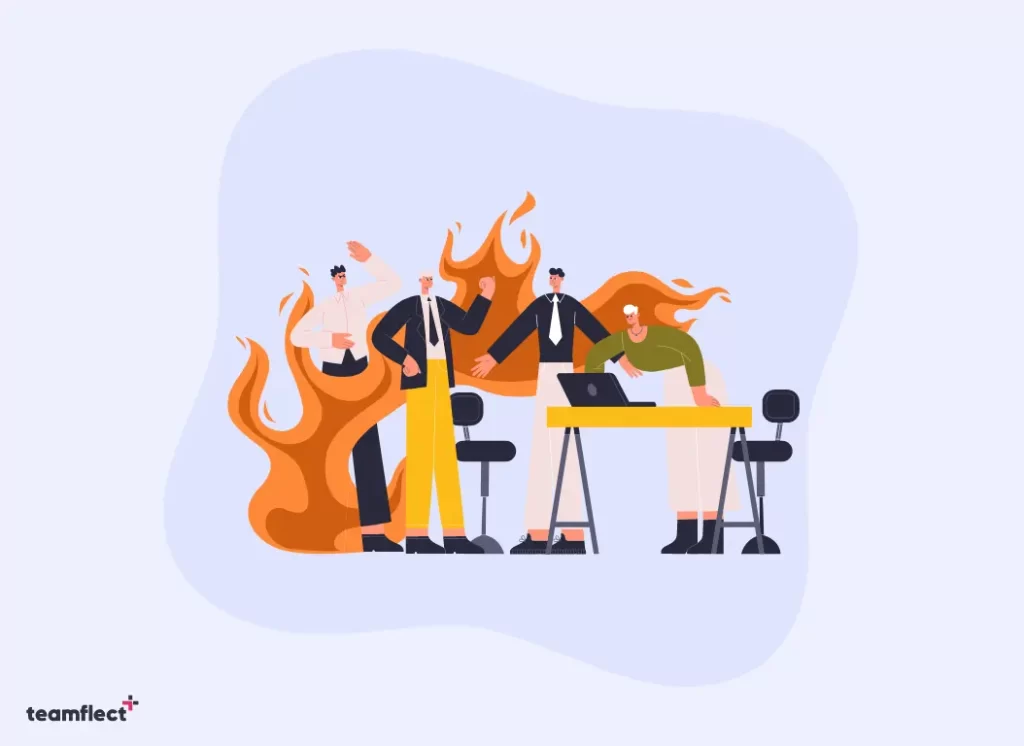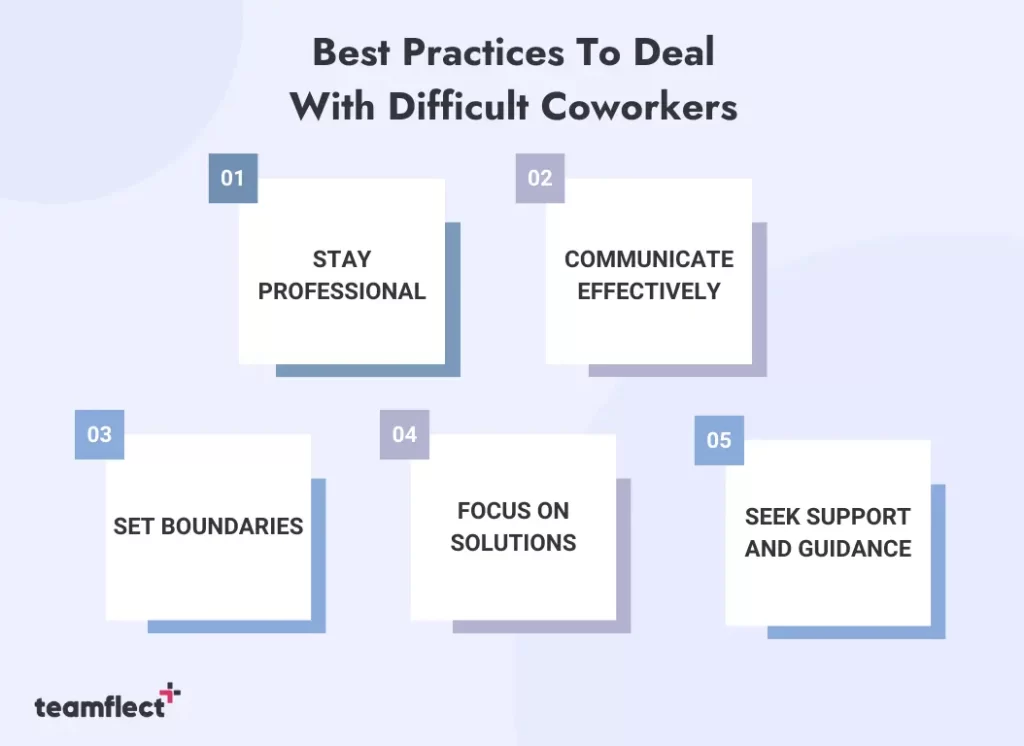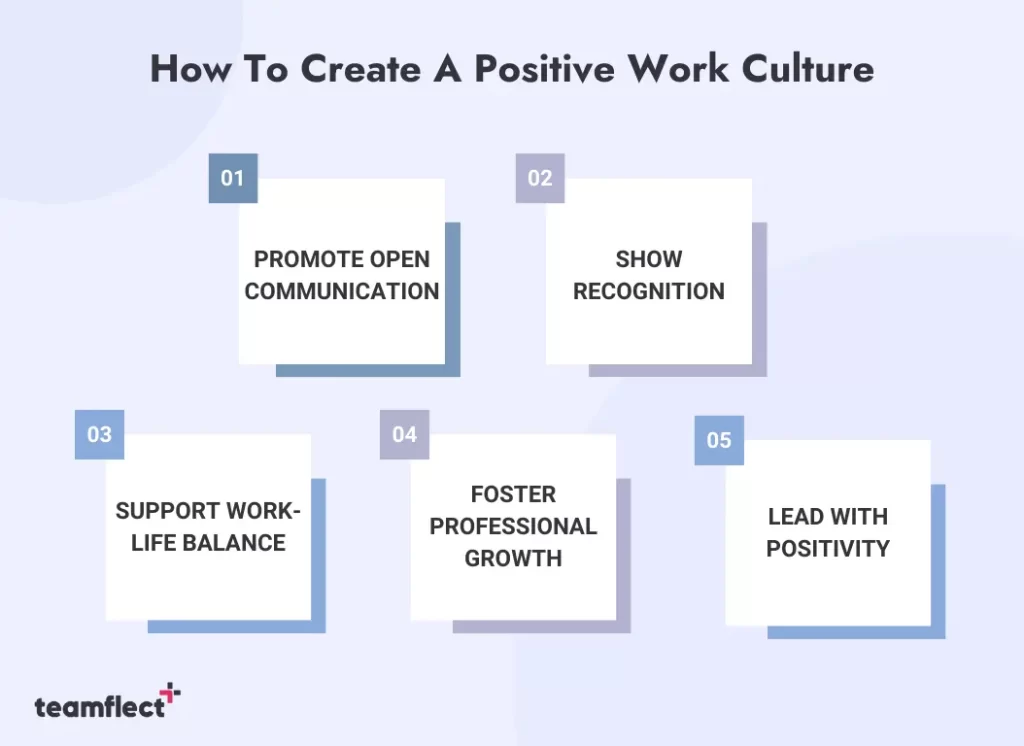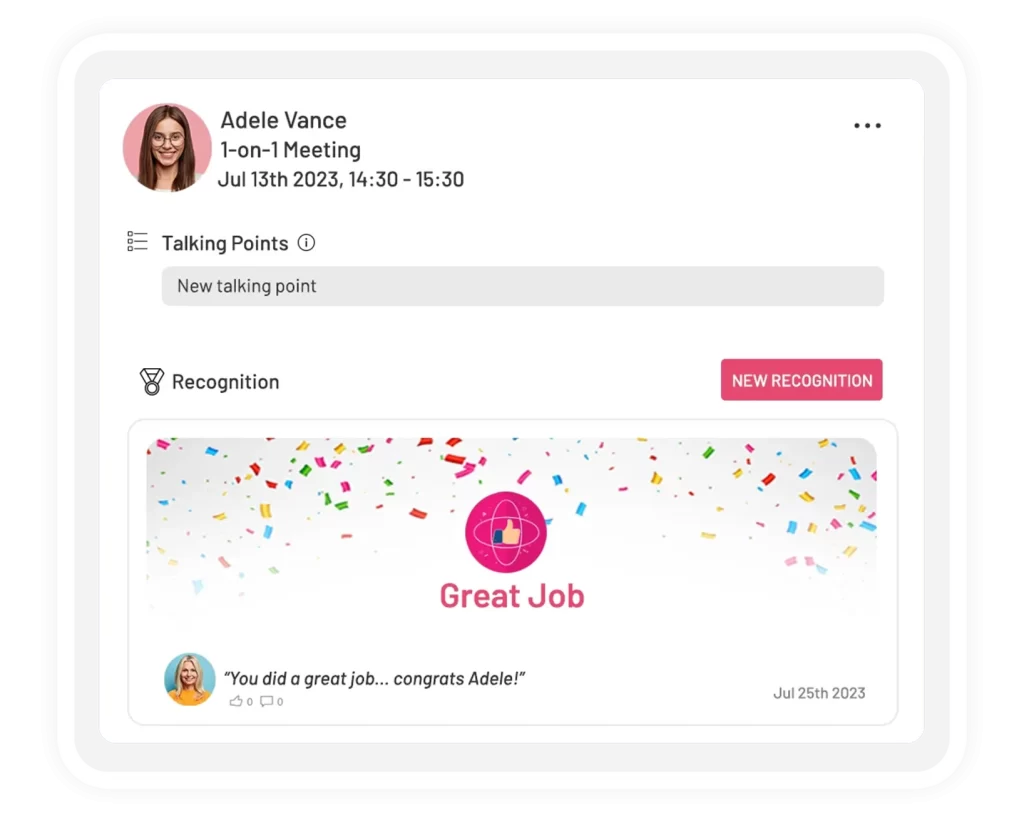Having to deal with difficult coworkers has likely happened to all of us at least once in our careers. It can truly be a hassle at times. Let’s paint a picture together. You’re at your desk ready to take on your day but then you glance over across the room and feel a knot tie in your stomach.
It’s not the workload that concerns you but rather the difficult coworker who seems to have a special talent to turn every interaction into a challenge and stress you out. We’ve all been there and done that. While most coworkers can be supportive there is always someone who can be a bit more interesting to work with due to the specific set of challenges they bring.
Difficult coworkers are something we all have to learn and accept to live with but that doesn’t mean we can’t make that a little bit easier on ourselves. Let’s take a look into what types of difficult coworkers there are, best practices to deal with them, and some examples to follow. So stick around!
Table of Contents
Types of Difficult Coworkers
The Negative Nancy/Ned:

This is the coworker who always seems to be the ultimate pessimist in the team. They’re very quick to point out flaws and have a tendency to complain about everything. This attitude obviously contributes negatively to the overall morale of any working team and employee engagement.
The Micromanager:

This is the difficult coworker who can’t resist the urge to see every tiny detail of the work being put out. The feeling of somebody breathing down your neck feels very real in these cases. Their lack of trust and autonomy can stifle productivity and innovation.
The Drama Queen/King:

These are the difficult coworkers who amplify everything around them and tend to thrive on workplace drama. Whether it’s spreading gossip or stirring up conflicts they are the ones who disrupt team dynamics with their chaotic energy.
The drama-feeding difficult coworkers tend to exaggerate minor issues as they go about likely doing more damage than good to the team’s and organization’s overall success.
The Slacker:

This difficult coworker is content with taking some time off during the day and slack off their responsibilities. They tend to also be okay with consequences such as other people in the team having to pick up their workload in certain cases while they choose to chill.
This too can be the difficult coworker who can be especially frustrating as their lack of accountability and responsibility can create resentment amongst teammates and threaten the success of collaborative projects.
The Passive-Aggressive Player:

This difficult coworker is more subtle in comparison to others. They can show hostility but yet do it indirectly which makes it harder to spot or act upon if needed.
Instead of addressing their own frustrations head-on, these coworkers choose to employ passive-aggressive tactics such as sarcastic comments, backhanded compliments, or withholding information deliberately in an effort to undermine others.
Best Practices To Deal With Difficult Coworkers
Difficult coworker types aside, there are still ways to best deal with them, even if you cannot change their ways to healthier approaches at work. Let’s take a look.

1. Stay Professional
This may be the very best way to keep you cool when faced with difficult coworkers. At its core, a difficult coworker stays outside of the line where professionalism begins. So with that logic, keeping your professionalism intact will always be the best strategy.
Refrain from engaging in unproductive behavior or responding impulsively to provocation. Instead, keep your focus on maintaining a composed demeanor and address any issues with diplomacy. As you stay professional, you’ll more easily prevent conflict from escalation and demonstrate your commitment to a positive work environment.
2. Communicate Effectively
Effective communication is key for anyone in the workplace. Difficult coworkers often don’t practice this. In the face of possible conflict with these coworkers, you will need good communication skills to maneuver safely out of that interaction.
Express concern directly and assertively and convey your perspective without blame. Make sure to be present in the conversation and actively listen. This will help you fast-track your way into a proactive solution. Fostering open communication will help promote understanding and collaboration, even at the face of a difficult coworker.
3. Set Boundaries
Oftentimes, difficult coworkers are challenging because whether it is clear or not, they are invading certain boundaries. Establishing clear boundaries is essential to protect your well-being and maintain a healthy work environment in which you can thrive and perform without being burnt out.
Politely decline participation in any unwanted behavior such as gossiping, and communicate your expectations clearly and respectfully for future reference. When you set and enforce healthy boundaries, you create a workplace that is positive and productive and where you can preserve your peace of mind.
4. Focus on Solutions
Addressing conflict can be a hard thing to manage whether there are difficult coworkers around or not. The way out is to keep your focus on solutions and not blame anyone for something that’s already in the past. Instead, make sure to find practical solutions that can help avoid any issues in the future.
Identify areas of compromise if needed, to make sure the outcomes are mutually beneficial. Frame your discussions in a problem-solving manager rather than being negative like a certain type of difficult coworker. This way, you’ll be able to harmoniously work together and overcome challenges, keeping the real focus on your organizational goals.
5. Seek Support and Guidance
When you’re dealing with difficult coworkers don’t hesitate to seek support from your team. Discuss your concerns with someone who can offer objective advice and perspective, someone who can help you explore potential strategies.
You may also consider engaging in professional development opportunities for conflict resolution and enhance your existing skills in handling workplace challenges. In doing so, you can gain valuable insights and resources to navigate interactions with difficult coworkers with confidence and resilience.
Difficult Coworker Interaction Examples and Solutions
Now that we have best practices for dealing with difficult coworkers up our sleeves, let’s take a look at some examples and resolve them together.
What to do when a co-worker is overly critical of you?
Interaction: Your coworker consistently criticizes your ideas during team meetings, undermining your confidence and enthusiasm.
Solution: Address the issue directly and express how their negative feedback impacts your motivation. Encourage them to provide constructive criticism rather than only focusing on shortcomings. Keep in mind to emphasize the importance of maintaining a positive and supportive team environment in general.
What to do when you are being micro-managed?
Interaction: Your coworker constantly checks in on your progress, questions your decisions, and insists on approving every detail of your work.
Solution: Schedule a one-on-one meeting with your micromanaging coworker and discuss your concerns. Politely assert your need for autonomy and trust in completing your tasks effectively. Offer regular updates to alleviate their anxieties while affirming your competency and reliability.
What to do when your coworker is gossiping about you?
Interaction: Your coworker spreads rumors about you to other team members, causing tension and mistrust in the workplace.
Solution: Address the issue discreetly with your coworker and express your discomfort with the rumors and their negative impact on team dynamics. Focus on resolving the underlying issue or misunderstanding, and encourage open and honest communication in the future. If necessary, you can also involve a supervisor or HR representative to mediate the situation and prevent any possible escalations.
What to do when your coworker is slacking off?
Interaction: Your coworker frequently misses deadlines, leaving you to pick up the slack and jeopardizing the success of team projects.
Solution: Have a candid conversation with them about the importance of meeting deadlines and fulfilling responsibilities within the team. Express how their actions affect the workload division and motivation of the entire team. Offer your support and assistance in prioritizing tasks or improving time management skills, but emphasize the need for accountability at the same time.
What to do if your coworker is being passive-aggressive?
Interaction: Your coworker consistently makes snide remarks or undermines your contributions during team meetings, but denies any wrongdoing when confronted.
Solution: Address the behavior directly, citing examples of their passive-aggressive actions and their impact on the team. Encourage them to express their concerns or frustrations openly and constructively moving forward. Set clear expectations for respectful communication and collaboration, and be prepared to escalate the issue to a supervisor or HR if the behavior still goes on.
How To Create a Positive Work Culture?
In order to resolve workplace conflicts before they even begin, whether they are caused by difficult coworkers or not, it’s important to create a positive environment at work that your employees can thrive in and make meaningful contributions to your organizational success. Here’s how!

1. Promote Open Communication: Encourage transparent communication channels where employees feel comfortable expressing their ideas, concerns, and feedback. Actively listen to your team members, validate their perspectives, and respond with empathy and respect.
Implement regular check-ins, team meetings, and feedback sessions to facilitate dialogue and collaboration, fostering a sense of inclusion and belonging.
2. Show Recognition and Appreciation: Acknowledge and celebrate the contributions of your employees consistently. Implement recognition programs, such as “Employee of the Month” awards to highlight achievements and efforts.
Express genuine appreciation for their work and dedication, both publicly and privately, to boost morale and motivation. Keep in mind that a simple “thank you” can go a long way in reinforcing positive behaviors and strengthening team cohesion.
Implementing a recognition software can be a great option to recognize and celebrate your workforce especially if you are in a remote setting. We have you covered! You can use Teamflect, the best all-in-one performance solution implemented into Microsoft Teams, to recognize your employees!

You can use Teamflect’s recognition module to
- Create customizable recognition badges and reflect your company values
- Create manager/admin-only recognition badges to recognize high-performers
- Send private recognitions to celebrate success in confidential projects
- Track recognition across departments with advanced reports
3. Support Work-Life Balance: Recognize the importance of work-life balance in maintaining employee well-being and job satisfaction. Encourage flexible scheduling options, remote work opportunities, and time-off policies that accommodate personal needs and responsibilities.
Lead by example by prioritizing your own work-life balance and respecting boundaries between work and personal life. Promoting a healthy balance will help reduce stress and burnout while cultivating a culture of greater engagement and productivity in your organization.
4. Foster Professional Growth: Invest in employee development and growth by providing opportunities for learning, skill-building, and career advancement. Offer training programs, workshops, and mentorship opportunities to help your workforce expand their knowledge.
Support ongoing professional development through access to resources, certifications, and networking opportunities. Empowering your team like this to help them grow and succeed, will not only enhance their job satisfaction but also strengthen the overall capacity and resilience of your team, having a positive impact on your organizational success.
5. Lead with Positivity and Authenticity: Set the tone for a positive workplace culture through your own behavior and leadership style. Demonstrate positivity, optimism, and resilience, even in the face of challenges or setbacks. Create an environment of trust and credibility by being transparent, consistent, and approachable in your interactions with employees.
Be authentic in your leadership and show genuine care for the well-being and success of your team. Model these positive behaviors and you can inspire confidence, loyalty, and commitment among your employees, ultimately contributing to a happier and more productive workplace environment.
A positive workplace culture will severely impact your workforce in terms of overall satisfaction and happiness. In the same way, unless your employees are happy and satisfied, there really is no way around to ensure long-term organizational success. Create and keep a positive environment and equip your employees in the face of difficult coworkers so that you have the right mix for your organization’s success!



